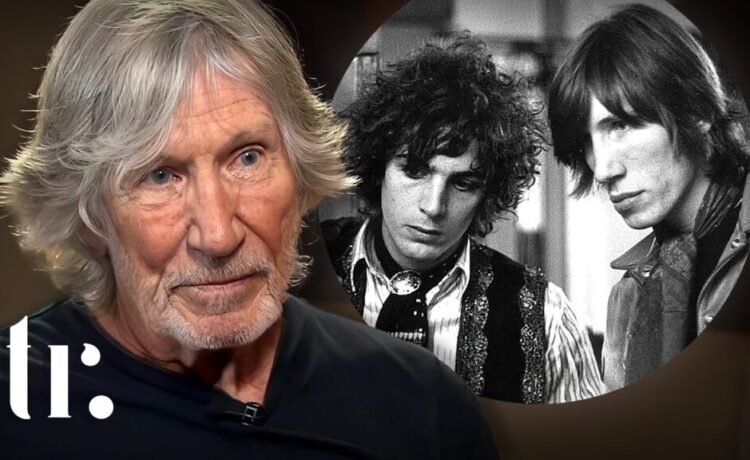To many longtime fans, there are — at the very least — two Pink Floyds. The first is the rock band that in 1965 took the name the Pink Floyd Sound, an invention of its newest member Syd Barrett. A guitar-playing singer-songwriter, the young Barrett soon became the group’s guiding creative intelligence, albeit of a cracked kind. It was under his influence that, two years later, the Floyd released their first two hit singles,“Arnold Layne” and “See Emily Play,” as well as their debut studio album The Piper at the Gates of Dawn. This early material exhibits a kind of darkly whimsical English eccentricity that turned out to fit neatly indeed with the psychedelia of the music-driven late-sixties counterculture.
This first Pink Floyd lasted until partway through the production of their second album, A Saucerful of Secrets. Up to that point, Barrett’s behavior had been turning ever stranger and less manageable; eventually, he passed entire concerts in a state of near catatonia onstage (with the occasional spasm of a deep-seated tendency to practical jokes).
After considering and finding unfeasible the option to retain him as a non-touring contributor, the other members decided simply to eject him from the band. Thus began the Floyd’s second iteration, which, despite the loss of the man who’d been writing 90 percent of their songs, did nevertheless manage to come up with albums like Atom Heart Mother, The Dark Side of the Moon, Wish You Were Here, and The Wall.
When Barrett died in 2006, after decades of life as a recluse (and, ever the Englishman, an enthusiastic gardener), he was widely remembered as a casualty of the psychedelic drug wave. But according to Roger Waters, who took the band’s reins, “LSD was not solely responsible for Syd’s illness.” He says so in the video above, a compilation of his recollections of Barrett’s decline. “It felt to me at the time that Syd was drifting off the rails, and when you’re drifting off the rails, the worst thing you could do is start messing around with hallucinogenics.” There was “no doubt that Syd was schizophrenic, and that he was taking those drugs at the same time.” It could well have been that Barrett’s state of mind allowed him to voyage into realms that the Floyd could otherwise never have accessed. But whatever the causal factors and their proportions, he eventually found himself unable to come back home.
Related content:
Psychedelic Scenes of Pink Floyd’s Early Days with Syd Barrett, 1967
Understanding Pink Floyd’s Wish You Were Here, Their Tribute to Departed Bandmate Syd Barrett
Watch David Gilmour Play the Songs of Syd Barrett, with the Help of David Bowie & Richard Wright
An Hour-Long Collection of Live Footage Documents the Early Days of Pink Floyd (1967–1972)
The Inventive Artwork of Pink Floyd’s Syd Barrett
Based in Seoul, Colin Marshall writes and broadcasts on cities, language, and culture. His projects include the Substack newsletter Books on Cities and the book The Stateless City: a Walk through 21st-Century Los Angeles. Follow him on the social network formerly known as Twitter at @colinmarshall.















